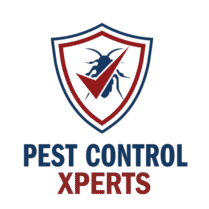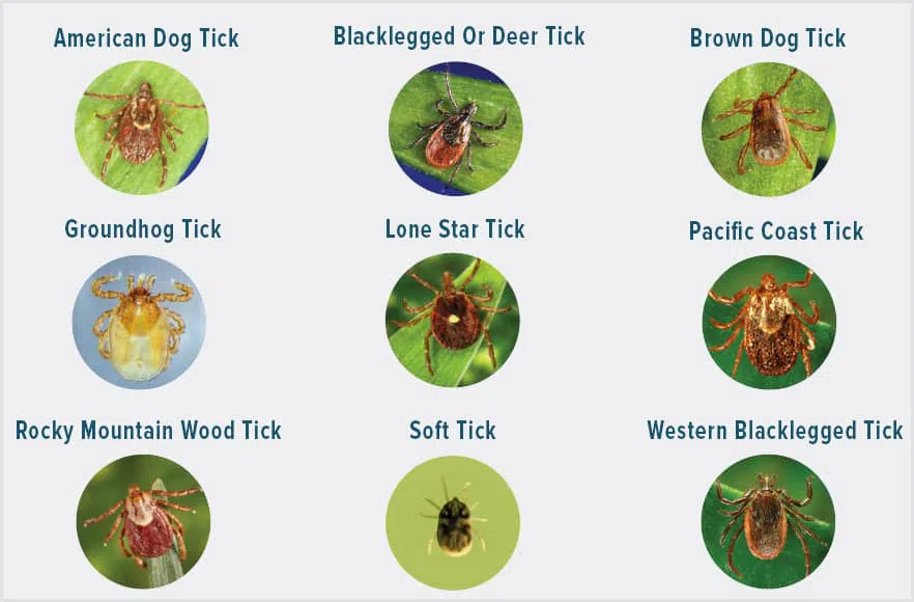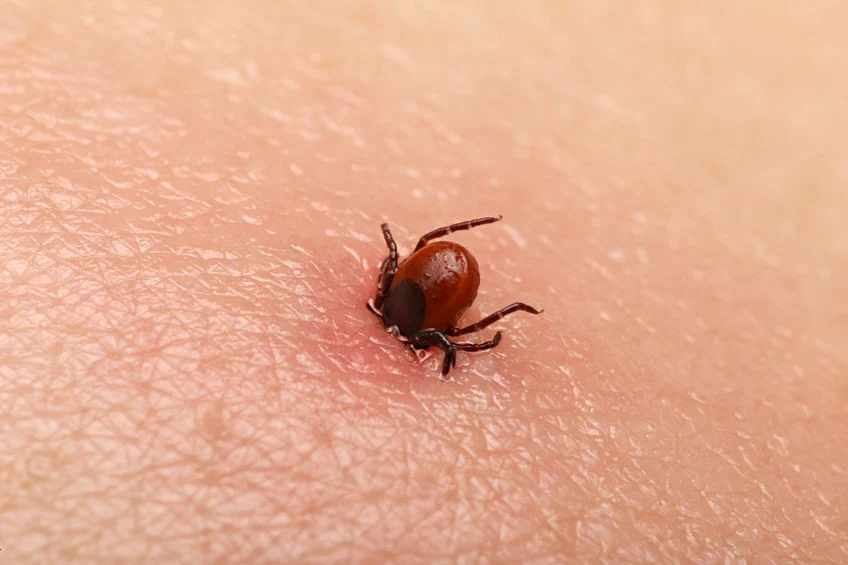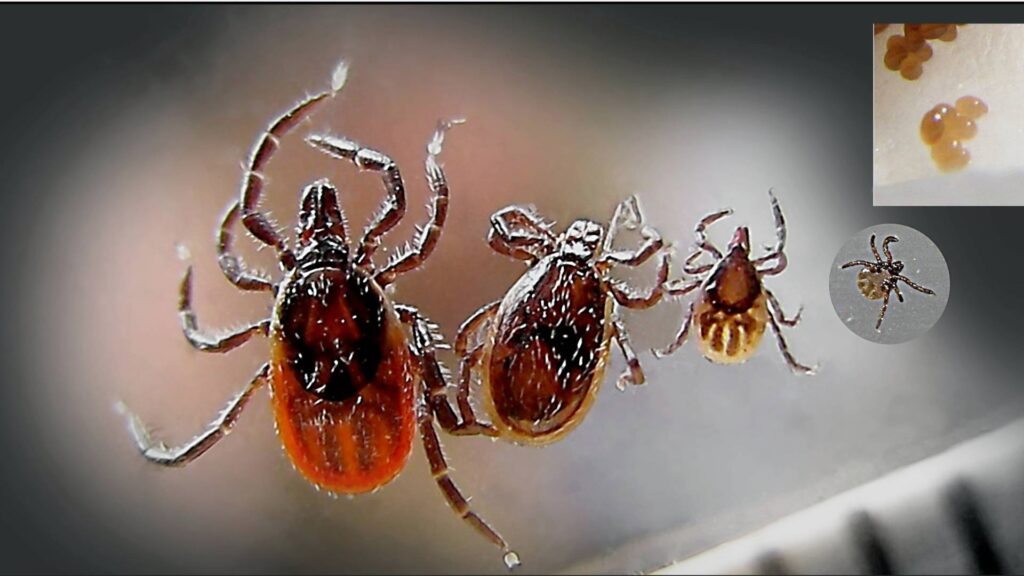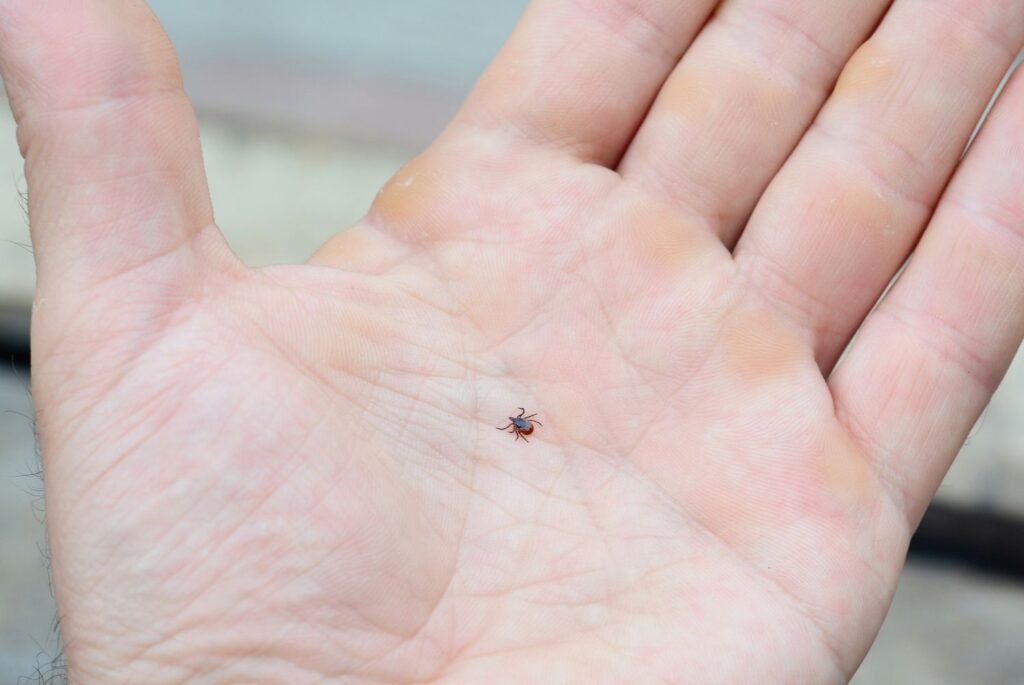Tick Removal Services by Pest Control Xperts in Lodi
Serving homes, apartments, dormitories, hotels, and healthcare offices throughout Lodi, Lockeford, Linden, Valley Springs, Woodbridge, California, and Surrounding Areas
Tick Control & Extermination in Lodi, Woodbridge, Lockeford, Linden, Valley Springs, California
Are you battling a persistent Tick problem in your Lodi home or business? The frustration of finding Ticks, the unsettling sight of their trails, and the constant worry about the damage they cause can feel overwhelming. Many property owners attempt DIY solutions, only to discover these efforts provide temporary relief, an illusion undone by the hidden, thriving colony deep within their property. At Lodi Pest Control Experts, we understand that true Tick elimination requires more than surface-level treatments. We target the problem at its source, eradicating the queen and nest to provide a definitive, lasting solution that DIY methods simply cannot achieve.
Why Ticks Appear in Lodi and Surrounding Communities
The Sacramento Valley, with its unique climate and geographical features, creates an environment particularly susceptible to various Tick species. Our location, nestled within the influence of the Feather River floodplain dynamics, provides ample moisture and diverse habitats that Ticks thrive in. The Sutter Buttes, often referred to as the “world’s smallest mountain range,” acts as a refuge zone, harboring Tick populations that can easily spread into urban and suburban areas. Understanding these local factors is crucial to effective Tick control.
The distinct transition from hot, dry summers to cold, foggy winters profoundly impacts Tick behavior. During the scorching, arid summers, as outdoor moisture evaporates and drought conditions prevail, Ticks are driven indoors, seeking the cooler, more humid environments of our homes and businesses. They exploit any structural vulnerability, from tiny cracks to unsealed foundations, to gain entry. Conversely, the arrival of cold, foggy winters compels Ticks to seek insulation and warmth, making attics, wall voids, and basements prime locations for establishing satellite colonies.
Local agricultural irrigation and flood control systems, while vital for our region’s economy, inadvertently create high-moisture pockets that are ideal breeding grounds for specific Tick species, such as carpenter Ticks. These Ticks are particularly drawn to damp, decaying wood, often found in crawl spaces, basements, and around leaky pipes. The consistent availability of moisture from these systems ensures a steady supply of suitable habitats, allowing Tick populations to flourish year-round.
Furthermore, the architectural landscape of Lodi and its neighboring communities plays a significant role in structural vulnerability. New tract housing developments, while modern, can sometimes have subtle construction gaps or unsealed utility entry points that provide easy access for odorous house Ticks and pharaoh Ticks. These species are incredibly adept at exploiting small openings, often establishing colonies behind walls, under floors, and within electrical outlets. Older homes in the historic center, with their charming character, often present different challenges. Settling foundations, aged wooden structures, and less robust sealing around windows and doors can create numerous entry points and hidden harborage areas, making these properties particularly susceptible to persistent infestations.
The transportation of goods through our region, particularly by commercial trucks, is another significant contributor to the spread of pervasive Ticks. Ticks can hitchhike on pallets, packaging, and even the vehicles themselves, inadvertently introducing new colonies into previously unaffected areas. This constant movement of goods means that properties, especially those near commercial routes or industrial zones, face an ongoing risk of Tick introduction, making proactive and comprehensive pest management essential.
Understanding the Enemy: Local Tick Species and Their Unique Threats
In the Lodi area, several Tick species commonly infest homes and businesses, each presenting unique challenges and threats. Knowing your enemy is the first step toward effective elimination.
- Carpenter Ticks: These Ticks are notorious for their destructive habits. They tunnel through wood, creating intricate galleries that compromise the structural integrity of homes. Signs include visible wood damage, frass (a sawdust-like material), and the presence of winged swarmers during mating season. Carpenter Ticks are particularly drawn to moisture, making areas with leaks or high humidity prime targets.
- Pavement Ticks: Often found in cracks in pavement, sidewalks, and driveways, these Ticks can easily migrate indoors, especially during extreme weather. They are small and can quickly establish satellite colonies within wall voids and under flooring. Pavement Ticks are a nuisance, contaminating food and surfaces as they forage.
- Odorous House Ticks: Named for the unpleasant, coconut-like odor they emit when crushed, these Ticks are highly adaptable and can infest nearly any part of a structure. They are often found in kitchens, bathrooms, and food preparation areas, posing a significant risk of food contamination. Odorous house Ticks are known for their rapid reproduction and can quickly overwhelm a property.
- Pharaoh Ticks: These tiny, light-colored Ticks are a major concern for food establishments and homes due to their ability to contaminate food and sterile environments. They are incredibly difficult to eradicate without professional intervention, as they establish multiple satellite colonies throughout a property. Pharaoh Ticks are resilient and can survive on a wide range of food sources.
- Fire Ticks: While less common indoors, fire Ticks can become a problem if they find their way inside, especially in warmer months. They are attracted to electrical outlets and appliances, posing a potential fire hazard. Their presence often indicates a larger outdoor population seeking refuge indoors.
- Argentine Ticks: These Ticks are known for their ability to travel long distances and establish new colonies quickly. They are often found near food sources and can contaminate pantries and food storage areas. Argentine Ticks are persistent and require targeted treatment for complete elimination.
- Thief Ticks: These tiny Ticks often live in close association with other Tick species, stealing their food. While not directly destructive, their presence can indicate a larger, more established Tick problem. Thief Ticks are difficult to detect due to their small size and secretive nature.
Problems Ticks Create for Homes and Businesses
An unchecked Tick infestation can lead to a cascade of negative consequences for both residential and commercial properties. The problems extend far beyond mere annoyance, impacting health, safety, and even financial stability.
- Food Contamination: Ticks, especially odorous house Ticks and pharaoh Ticks, are notorious for contaminating food sources. They can crawl over countertops, pantry items, and food preparation areas, leaving behind pathogens and waste. This poses a significant health risk, particularly in commercial kitchens and food processing facilities, where strict hygiene standards are paramount.
- Property Damage: Carpenter Ticks, in particular, are wood-destroying insects that can cause significant structural damage over time. Their tunneling activities weaken wooden beams, floors, and walls, potentially leading to costly repairs. The presence of frass, or Tick droppings, is a clear indicator of their destructive work. Moisture Ticks can also exacerbate existing moisture problems, leading to rot and further structural compromise.
- Brand Reputation Risk: For businesses, a Tick infestation can be catastrophic for brand reputation. News of Ticks in a restaurant, grocery store, or hotel can spread rapidly, leading to lost customers, negative reviews, and a significant drop in revenue. Maintaining a pest-free environment is essential for consumer trust and business longevity.
- Health Risks: While not all Ticks carry diseases, some species can transmit bacteria and viruses. Beyond this, the mere presence of Ticks can trigger allergies and asthma in sensitive individuals. The psychological toll of living or working in an infested environment, with the constant worry of Ticks, can also lead to stress and anxiety.
- Satellite Colonies and Colony Budding: Ticks are masters of survival and reproduction. A single colony can quickly expand through a process called colony budding, where smaller satellite colonies break off and establish themselves in new locations within the same structure. This makes eradication incredibly challenging for DIY efforts, as eliminating one visible group often leaves numerous hidden nests to continue the infestation.
- Tick Mounds: In some cases, particularly with certain soil-dwelling species, Ticks can create visible mounds in yards or gardens. These mounds are indicative of a large, established outdoor colony that is actively seeking entry into your home or business, further increasing the risk of an indoor infestation.
Signs of an Escalating Tick Infestation: When to Call the Experts
Recognizing the early signs of a Tick infestation can prevent it from escalating into a full-blown crisis. While a single Tick might not be cause for alarm, certain indicators suggest a deeper, more entrenched problem that requires professional intervention.
- Visible Ticks: The most obvious sign is seeing Ticks themselves. While a lone Tick might be a stray, consistent sightings, especially in different areas of your home or business, indicate an active infestation. Pay close attention to kitchens, bathrooms, pantries, and basements.
- Tick Trails: Some Tick species, like pavement Ticks, leave faint trails as they move across surfaces. These can be subtle, but if you notice fine, dusty lines on countertops, floors, or shelves, it could be a sign.
- Frass: This is the droppings of wood-destroying Ticks, resembling fine sawdust or coffee grounds. Finding frass near wooden structures, baseboards, or furniture is a strong indicator of carpenter Tick activity and potential structural damage.
- Damaged Wood: If you notice small, irregularly shaped holes in wooden structures, or if wood sounds hollow when tapped, it could be a sign of carpenter Tick tunneling.
- Unpleasant Odors: Odorous house Ticks, as their name suggests, can produce a distinct, unpleasant smell, often described as coconut-like, when their colonies are disturbed or crushed.
- Food Contamination: If you find small, dark specks in your pantry items, or if packaged food appears to have been chewed or tampered with, Ticks could be the culprits.
- Increased Activity at Night: Many Tick species are more active at night. If you notice an increase in Tick sightings after dark, it suggests a well-established colony.
- Sudden Appearance in Specific Rooms: Why do Ticks suddenly appear in your bathroom, or your kitchen? Often, this indicates a nearby satellite colony or a direct entry point. Ticks are seeking moisture and food, making these rooms attractive.
Why Professional Extermination is Essential for Tick Removal
The allure of store-bought sprays and traps is understandable. They promise quick fixes and seem like an easy solution to a frustrating problem. However, these DIY methods are often temporary illusions undone by the hidden realities of a Tick infestation. Here’s why professional extermination is not just an option, but an essential investment for definitive Tick removal:
DIY products typically target only the visible Ticks, leaving the vast majority of the colony untouched. Ticks are masters of concealment, establishing intricate nests and satellite colonies deep within walls, under floors, in attics, and within foundation cracks. These hidden strongholds, often containing the queen and thousands of eggs, remain impervious to surface-level treatments. You might eliminate a few foragers, but the core of the problem persists, allowing the infestation to rebound with renewed vigor.
Furthermore, many over-the-counter pesticides lack the potency and residual effect necessary to penetrate Tick harborage areas. They may deter Ticks for a short period, but they rarely eliminate the entire population. This leads to a frustrating cycle of recurring infestations, where you spend more time, effort, and money on ineffective solutions, while the Tick problem continues to grow.
Professional Tick treatment, on the other hand, employs a comprehensive, multi-faceted approach. Our experts conduct thorough inspections to identify all active and potential harborage areas, including those hidden from plain sight. We utilize specialized products and techniques, such as targeted baiting systems and crack and crevice treatments, designed to reach and eliminate the entire colony, including the queen and her nest. This ensures that the problem is addressed at its root, preventing future generations of Ticks from emerging.
The “illusions undone by” the hidden colony is a critical concept to grasp. What you see on the surface is rarely the full extent of a Tick problem. DIY efforts are like trimming the branches of a weed, while a professional service digs up the root. Without eliminating the source, the weed will always grow back. Similarly, without eliminating the queen and nest, your Tick problem will always return. Professional extermination provides the definitive solution, breaking the cycle of infestation and restoring peace of mind to your home or business.
Advanced Tick Exclusion Methods and Structural Pest Control
Eradication is only one part of a comprehensive Tick control strategy. Once the active infestation has been eliminated, implementing advanced exclusion methods and structural pest control techniques is crucial to prevent future incursions. Our approach focuses on making your property inhospitable to Ticks.
Sealing entry points is a primary focus. This includes identifying and sealing cracks in the foundation, gaps around utility pipes, vents, and electrical conduits. We also address any openings around windows and doors, ensuring a tight seal that Ticks cannot penetrate. For older homes, this might involve repairing or replacing damaged weather stripping and door sweeps. For newer constructions, it means ensuring all building materials are properly sealed and integrated.
Managing moisture is another critical component. Ticks, especially carpenter Ticks and moisture Ticks, are highly attracted to damp environments. We identify and rectify sources of excess moisture, such as leaky pipes, faulty drainage systems, and poor ventilation in crawl spaces and basements. This might involve recommending dehumidifiers, improving airflow, or repairing plumbing issues. By reducing moisture levels, we eliminate a key attractant for many Tick species.
Foundation sealing is particularly important. Ticks can easily enter through tiny cracks in the foundation, making their way into wall voids and other hidden areas. We apply specialized sealants to create a robust barrier, preventing ground-level entry. This perimeter defense is a crucial element of our long-term prevention strategy, acting as a Tick barrier around your property.
Furthermore, we may recommend other exclusion techniques, such as installing mesh screens over vents and chimneys, or repairing damaged screens on windows and doors. Our goal is to create a physical barrier that Ticks cannot bypass, significantly reducing the risk of re-infestation. These structural pest control measures are integrated into our overall IPM strategy, ensuring a holistic and lasting solution.
Our Tick Removal Method: A Step-by-Step IPM Approach
At [Lodi] Pest Control Experts, we employ a thorough and systematic Integrated Pest Management (IPM) approach to Tick removal. Our step-by-step process is designed to be effective, environmentally responsible, and tailored to your specific situation.
- Consultation & Inspection: The process begins with a detailed consultation to understand your concerns and a comprehensive Tick inspection of your property. Our experts meticulously examine both interior and exterior areas, identifying the species of Tick, the extent of the infestation, entry points, harborage areas, and contributing factors like moisture issues. This initial assessment is crucial for developing a targeted treatment plan.
- Customized Treatment: Based on our inspection findings, we develop a customized treatment plan. This plan incorporates a combination of strategies, including targeted Tick baiting systems, crack and crevice treatments, and perimeter defense applications. We focus on eliminating the entire colony, including the queen and nest, using professional-grade products and techniques that are highly effective against Ticks.
- Exclusion & Maintenance: After the initial eradication, we implement exclusion techniques to prevent future infestations. This involves sealing entry points, managing moisture, and addressing any structural vulnerabilities. We also provide recommendations for ongoing maintenance to keep your property Tick-free.
- Monitoring: Our commitment to your peace of mind extends beyond the initial treatment. We establish a monitoring program to track Tick activity and ensure the effectiveness of our interventions. This may involve follow-up visits and the placement of monitoring devices to detect any signs of re-infestation. Our bi-monthly service ensures continuous protection.
Our IPM approach emphasizes long-term prevention and sustainable solutions, minimizing the use of pesticides while maximizing effectiveness. We believe in educating our clients about Tick biology and behavior, empowering them to take proactive steps in conjunction with our professional services.
Tailored Commercial Tick Services
Businesses in Lodi and the surrounding areas face unique challenges when it comes to Tick control. A Tick infestation can not only disrupt operations but also severely damage reputation and lead to regulatory issues, especially in industries with strict health and safety standards. [Lodi] Pest Control Experts offers tailored commercial Tick services designed to meet the specific needs of various business sectors.
We understand the importance of discretion and minimal disruption to your business. Our technicians work efficiently and with minimal intrusion, ensuring your daily operations can continue smoothly. We develop customized IPM plans that address the specific Tick species prevalent in commercial environments, such as pharaoh Ticks in food processing plants or pavement Ticks in warehouses.
For businesses in the food industry, our services often include adherence to HACCP (Hazard Analysis and Critical Control Points) compliance protocols. We implement strategies that prevent Tick contamination, protect your products, and ensure you meet all relevant health regulations. Our treatment methods are chosen with the safety of your employees and customers in mind, utilizing products and techniques appropriate for commercial settings.
Beyond eradication, our commercial services focus heavily on prevention and ongoing maintenance. We establish robust perimeter defense systems, implement advanced exclusion techniques, and provide regular monitoring to proactively address any potential Tick issues. Our seasonal Tick service and annual maintenance plans ensure your business remains protected year-round, safeguarding your reputation and operational continuity.
Whether you operate a restaurant, a retail store, a warehouse, or an office building, [Lodi] Pest Control Experts has the expertise and resources to provide definitive commercial Tick control, allowing you to focus on your business with confidence.
Why Lodi Relies on Lodi Pest Control Experts for Definitive Tick Control
When it comes to definitive Tick control in Lodi, Woodbridge, Lockeford, Linden, and Valley Springs, property owners consistently turn to [Lodi] Pest Control Experts. Our reputation is built on a foundation of unparalleled expertise, a deep understanding of local Tick challenges, and an unwavering commitment to complete colony elimination.
Our team possesses extensive regional familiarity, allowing us to accurately identify the specific Tick species impacting your property and tailor our treatments accordingly. We understand how the unique climate, geography, and architectural styles of the Sacramento Valley influence Tick behavior and infestation patterns. This local insight is invaluable, enabling us to develop highly effective strategies that generic pest control services simply cannot match.
We don’t just treat the symptoms; we eliminate the source. Our core objective is complete colony elimination, targeting the queen and nest to ensure a lasting solution. We know that anything less is a temporary fix, an illusion that will inevitably be undone by the hidden, thriving Tick population. Our IPM approach combines thorough inspections, customized treatments, advanced exclusion methods, and ongoing monitoring to provide comprehensive protection.
Our commitment to excellence extends to every aspect of our service. We prioritize clear communication, ensuring you are fully informed throughout the process. We use professional-grade products and techniques, applied by highly trained technicians who adhere to the highest industry standards. When you choose [Lodi] Pest Control Experts, you’re choosing a partner dedicated to restoring and maintaining a Tick-free environment for your home or business.
The Value of Seasonal Tick Prevention
Given the distinct climate patterns of the Sacramento Valley, seasonal Tick prevention is not merely a recommendation, but a crucial component of a truly definitive Tick control strategy. The transition from hot, dry summers to cold, foggy winters creates predictable cycles of Tick activity, and our seasonal service is designed to address these shifts proactively.
In spring, as temperatures rise and outdoor activity increases, Ticks emerge from their overwintering sites, seeking new food sources and breeding grounds. Our spring treatments focus on establishing robust perimeter defense systems and addressing early-stage outdoor colonies, preventing them from migrating indoors. This is a critical time for initial Tick barriers and targeted outdoor applications.
Summer brings intense heat and dryness, driving many Tick species indoors in search of moisture and cooler temperatures. Our summer service focuses on reinforcing interior defenses, identifying and sealing potential entry points, and addressing any satellite colonies that may have established themselves within your property. This often involves crack and crevice treatments and moisture control strategies.
As fall approaches, Ticks may seek warmer, more sheltered locations to prepare for winter. Our fall treatments concentrate on exterior exclusion, ensuring all structural vulnerabilities are sealed, and applying preventative measures to deter Ticks from seeking refuge inside your home or business during the colder months. This seasonal approach, often delivered through a bi-monthly service, ensures continuous protection against the evolving threats of Tick infestations.
By aligning our treatments with the natural life cycles and behavioral patterns of local Tick species, we provide proactive protection that keeps your property Tick-free year-round. This preventative approach is far more effective and less disruptive than reacting to an established infestation.
Are you tired of the endless battle against Ticks, the unsettling feeling of their presence, and the damage they inflict? Don’t let temporary DIY solutions provide an illusion of control while the hidden colony continues to thrive. It’s time to reclaim your peace of mind with a definitive solution. Contact us for an immediate consultation and let [Lodi] Pest Control Experts eliminate your Tick problem at its source.
We proudly serve Lodi, Woodbridge, Lockeford, Linden, Valley Springs, California, and all relevant zip codes in our service area.
